 Place Names of Wisconsin
Place Names of Wisconsin
The University of Wisconsin Press
1930 Monroe Street, 3rd Floor
Madison, Wisconsin 53711-2059
uwpress.wisc.edu
3 Henrietta Street, Covent Garden
London WC2E 8LU, United Kingdom
eurospanbookstore.com
Copyright 2016
The Board of Regents of the University of Wisconsin System
All rights reserved. Except in the case of brief quotations embedded in critical articles and reviews, no part of this publication may be reproduced, stored in a retrieval system, transmitted in any format or by any meansdigital, electronic, mechanical, photocopying, recording, or otherwiseor conveyed via the Internet or a website without written permission of the University of Wisconsin Press. Rights inquiries should be directed to .
Printed in the United States of America
This book may be available in a digital edition.
Library of Congress Cataloging-in-Publication Data
Names: Callary, Edward, author.
Title: Place names of Wisconsin / Edward Callary.
Description: Madison, Wisconsin: The University of Wisconsin Press, [2016]
| Includes bibliographical references.
Identifiers: LCCN 2016012949 | ISBN 9780299309640 (pbk.: alk. paper)
Subjects: LCSH: Names, GeographicalWisconsin. | WisconsinHistory.
Classification: LCC F579 .C35 2016 | DDC 977.5dc23
LC record available at https://lccn.loc.gov/2016012949
PLACE NAMES OF
WISCONSIN
Edward Callary
The University of Wisconsin Press
For
William and Kathryn,
Namers of Tomorrow
A place is only space until it has a name

Contents


Acknowledgments
Many people and institutions contributed to the creation of this book, foremost among them the library of the Wisconsin Historical Society, a magnificent resource and one of Wisconsins cultural treasures. In addition, I want to thank each of the following librarians, local historians, and informed citizens who responded willingly and patiently to my often tedious requests. Many of their names appear in the body of this book for providing personal communications. I thank them all and offer my sincere apologies to anyone I may have overlooked. I especially appreciate the comments of the three anonymous readers of the manuscript whose suggestions have made this a more readable and more reliable book.
| Mike Abitz | Nicholas J. Hoffman |
| Cindy Arbiture | Marion Howard |
| Karen Baumgartner | Julie Johnson |
| Lorraine Beyersdorff | Cecil Kavajecz |
| Carrie Bissen | Carol Krogan |
| Charlene Borghese | Kathy Laakso |
| Beverly Brayton | Don Lau |
| Peggy Derrick | Helen Lena |
| Beth Dippel | Linda Levenhagen |
| Pamela Ekholm | James Linak |
| Kaylene Engel | Bruce Lindgren |
| Timothy L. Ericson | Glenda Lyons |
| Matt Figi | Mike Maki |
| Rick Hass | Maureen Malone |
| Nancy Hawkinson | Carol March McLernon |
| Joe Hermolin | Nanci A. Mertes |
| Amy Meyer | Marilyn Rudrud |
| Melanie Meyer | Heidi Rushmann |
| Mara Munroe | John Russell |
| Cynthia Nelson | Tom Schuller |
| Julie Nosgovitz | Sharon Strieter |
| Dan Olson | Denny Thompson |
| Kent Peronto | Eric Vanden Heuvel |
| William D. Petersen | Don Weggen |
| Mary Quante | Kitty Werner |
| Randall E. Rohe | Nick Zuvich |
| Jarrod Roll |

Introduction
The idea for this book came to me somewhat by chance more than a decade ago. On one of my many pleasure trips from northern Illinois to Wisconsin I was looking through the list of place names on the Wisconsin state highway map and it struck me: You can find almost all of Europe in Wisconsin. I saw such names as Arland and Valders from Norway, Stockholm and Lund from Sweden, Paris and La Grange from France, Orihula and Cadiz from Spain, Bern and Helvetia from Switzerland, Alma and Sevastopol from Russia, Oulu and Ladoga from Finland, Dundee and Elcho from Scotland, Askeaton and Avoca from Ireland, Brussels and Rosiere from Belgium, and Crivitz, Schleswig, and several Berlins and Hamburgs from Germany, along with dozens of names from England and Wales. To judge from its place names, Wisconsin was the Europe of the West. This observation led me on a pleasant journey of several years searching for the origins of Wisconsins place names, all the while being conscious of how the names reflected and embodied the peoples and cultures of the state over the nearly five hundred years of its recorded history. The place names of Wisconsin provide glimpses into the lives of its citizens, their origins, histories, and records of their concerns, their hopes, their ambitions, and their legacies to twenty-first-century Wisconsinites.
Place names are formally called toponymsa word made up of Greek topos meaning place and nym meaning name. Toponyms include the names of landforms, such as mountains and rivers, and political divisions, such as counties and cities. How many toponyms are there in Wisconsin? No one can say for sure, but as of mid-2016 the U.S. Geographic Names Information System (GNIS), the nations digital gazetteer, included more than forty thousand names for Wisconsin, ranging from the names of two levees (Whitman Dike in Buffalo County and Yellow Banks in Portage County) to the names of more than three thousand churches and five thousand lakes. It would be nice to know the origins of all of these names, but in order to keep this book to a manageable size and serve readers who are primarily interested in their home-towns and the places near them, I concentrated on the names of populated places and civil divisions rather than on natural features of the landscape. I began with a list of the 2,259 names of inhabited places found in DeLormes Wisconsin Atlas and Gazetteer. To this number I added the names of Wisconsins counties, the town names that did not duplicate community names, and the name of the state itself. This brought the number to nearly 3,500. Of these I was able to determine to my satisfaction the sources or most likely sources of the slightly more than two thousand names that are included in this book. To my great regret, among the missing thousand are some of Wisconsins more intriguing names, such as Radspur, Weirgor, and Frog Station.
I have generally not included the names of landforms, such as islands, caves, and mountains (Timms Hill, Wisconsins highest peak, is mentioned because it provided the name of the Town of Hill in Price County); some rivers and lakes are mentioned when communities or towns took their names. While I have reluctantly omitted the names of such features as airports (but see Foscoro below), military bases, bridges, colleges, and universities, there is one name that simply cannot be omitted from any book claiming to deal with Wisconsins names, and another, the name of the state itself, that deserves more consideration than an entry in the body of the book can provide. The first name, which has become synonymous with Wisconsin and its people, is of course Badger.



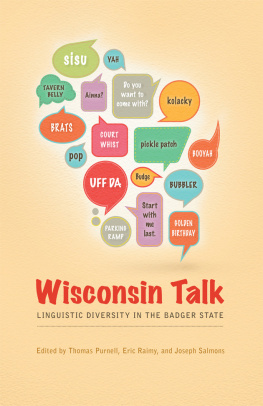
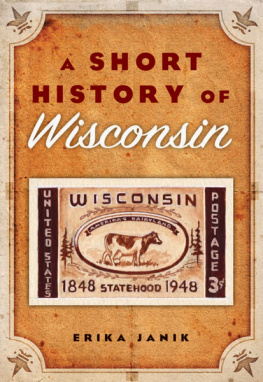
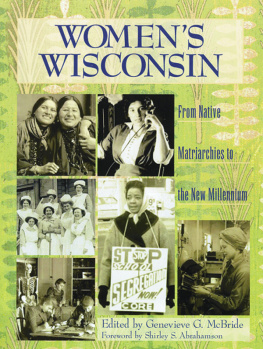

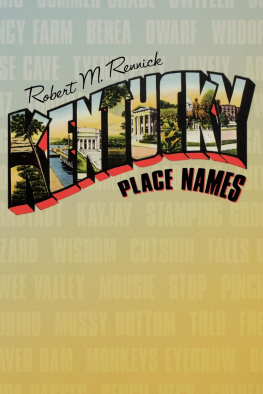
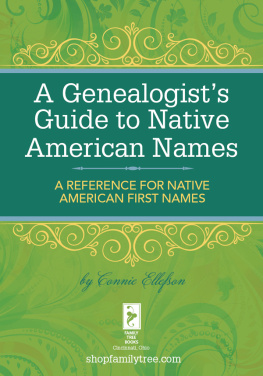
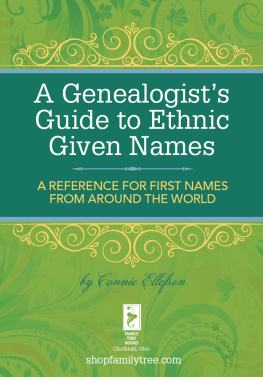

 Place Names of Wisconsin
Place Names of Wisconsin